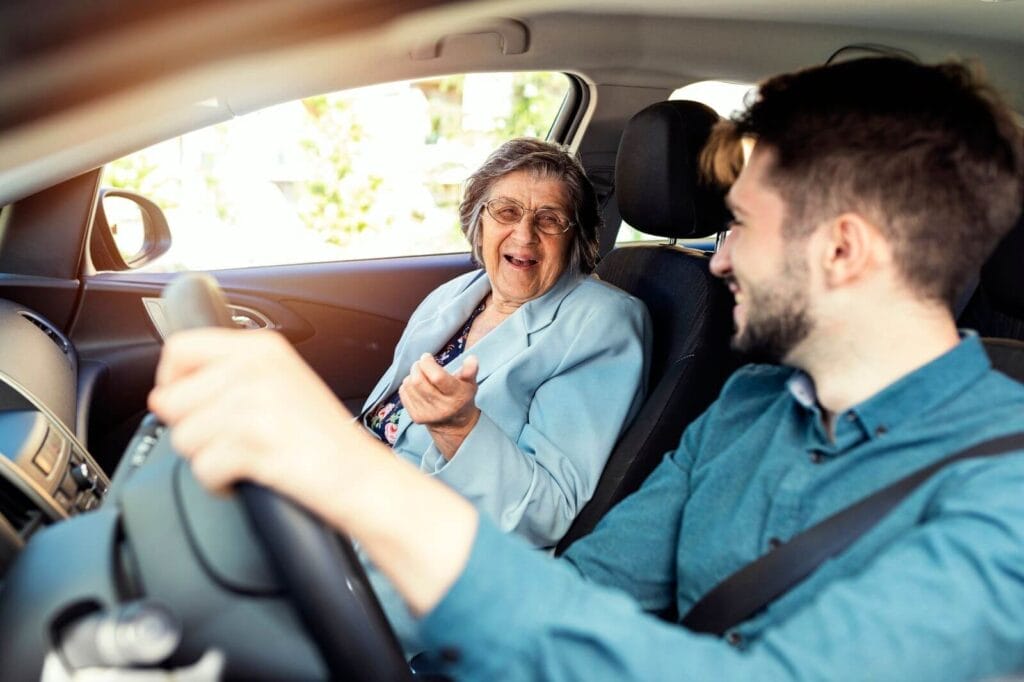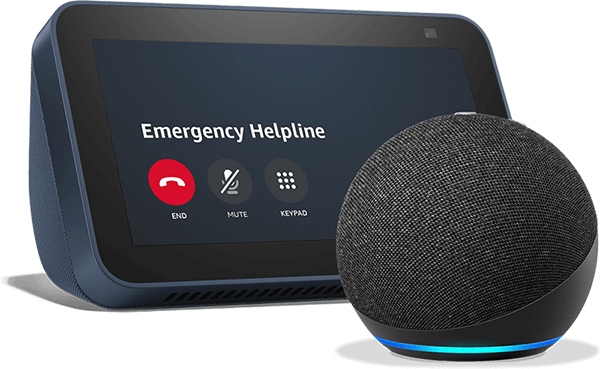
Whether your senior loved one needs to ride long distances or goes only to nearby doctor’s appointments, traveling by car may be uncomfortable for them. Getting in and out of the car, sitting for long periods of time, and having frequent urges to go to the bathroom can make riding in a car feel like a chore. Seniors may not be able to avoid car rides altogether, but they can make some adjustments and use mobility aids to make car travel more comfortable. Here, we go over tips to help make riding in a car more comfortable for seniors.
Get in and out of the car correctly
If your loved one needs extra time or some hands-on assistance to transfer in and out of the car, make sure you know how to safely support them. For example, if your loved one uses a mobility aid like a walker, they should use it all the way up to the point of getting in the car. They should lock it and use it to support them as they turn to sit down on the seat. Similarly, wheelchair users should position the wheelchair to make the transfer easy and lock the wheels before standing up.
Transferring is considered an activity of daily living, which means your loved one’s physician can order physical and occupational therapy to help them with the skill. A few outpatient visits can do wonders for their confidence in traveling by car because the therapist will teach them the proper way to transfer, and the practice will help strengthen the necessary muscles for the action. When possible, attend sessions with your loved one and get professional advice on how you can best support them during transfers. You’ll likely find relief in learning how to best help them, as helping with transfers appears in many caregiver duties you take on when helping your parent.
Use a gait belt (transfer belt)
A gait belt, also known as a transfer belt, is a helpful tool for helping someone stand and sit. The belt wraps around your loved one’s waist and gives you something to hold on to as you help them stand up and sit back down without straining their spine. If your loved one needs stand-by or hands-on assistance for transferring, consider purchasing one to keep in your car so you’ll always have it available.
Transfer boards can also help with getting in and out of the car. These are flat boards that allow the user to slide from one seat to another. Using them properly requires some training, so only use one if your loved one’s therapist or physician recommends it and you both have been trained on how to use it safely.
Bring their walker, cane, or mobility aid with you
Now that your loved one is safely in the car, it’s time to bring their mobility device with you to your destination. Before you pick up your loved one for your ride, make sure you have room in the trunk or back seat for their device and that you know how to fold it to store for the trip. Depending on the device your loved one uses, you might need a lot of room (for a wheelchair or scooter) or less room (for a cane or traditional walker).
If you are unsure how to fold the mobility device, you can quickly look up instructional videos online or learn how to do it from your loved one’s physician. Regardless, always remember to bring their mobility devices with you during car travel.
Use supportive pillows and cushions
Depending on your loved one’s needs and your vehicle, they might be uncomfortable while sitting in the seat. This can lead to stiffness, joint pain, and decreased mobility. You can remedy this concern by trying out different supportive pillows and cushions. Your loved one might benefit from a car seat cushion to boost them up or a lumbar pillow to support their lower back.
You might not get the perfect combination of pillows and support your first time trying, and that’s okay. Work with your loved one and experiment with different combinations until they feel their best.
Pack a toiletry kit and extra clothes
While your loved one is riding in a car for even a short distance, there is a chance they might need supplies you don’t regularly keep in your car. Pack a bag with extra clothes, incontinence briefs (if they wear them), gloves, wipes, tissues, and a bottle of water to keep in your car. You might not need these supplies every time, but it sure is handy to have them ready to go in case they have to make a stop to use the bathroom or have continence issues while on the road.
Medications and first aid
Review your loved one’s prescription and commonly used over-the-counter medications before hitting the road, and pack what you’ll need while they’re out of the house. Depending on their medication schedule, you might need to fill the pouch each time before you go out.
Don’t forget a bottle of water so they can swallow the medications easily. Consider any other medical supplies your loved one might need while you are out of the house, and pack those as well.
This pouch is also a great place to store some snacks, especially if your loved one has diabetes and might need to regulate blood sugar. If you’re packing something perishable, be sure it is taken out of the pouch before you leave the car for the day.
If you’re taking a longer trip with your loved one, perhaps for a few days or more, consider preparing a more comprehensive travel kit. The Centers for Disease Control and Prevention recommends working with a health care provider or travel health specialist to ensure you are prepared for everything, including what to do with medications that need to be refrigerated.
Prepare something to talk about
The car is an excellent place to have a meaningful conversation with your loved one. If you sometimes struggle to strike up a productive chat with them, you might want to bring conversation starter cards or have a list of reminiscing questions to ask as you drive. If talking isn’t your thing or theirs, play their favorite music, listen to an audiobook together, or try out a podcast you both will enjoy. Having something ready beforehand can ensure that the trip with your loved one is enjoyable for you both.
Ensuring your loved one’s safety and comfort is a priority, but anticipating how to prepare and what to bring on car rides can be difficult. If you prepare for long and short car rides in advance, you can ensure that your loved one arrives feeling confident and comfortable. Wishing you many safe and comfortable car rides with your loved one this year!








